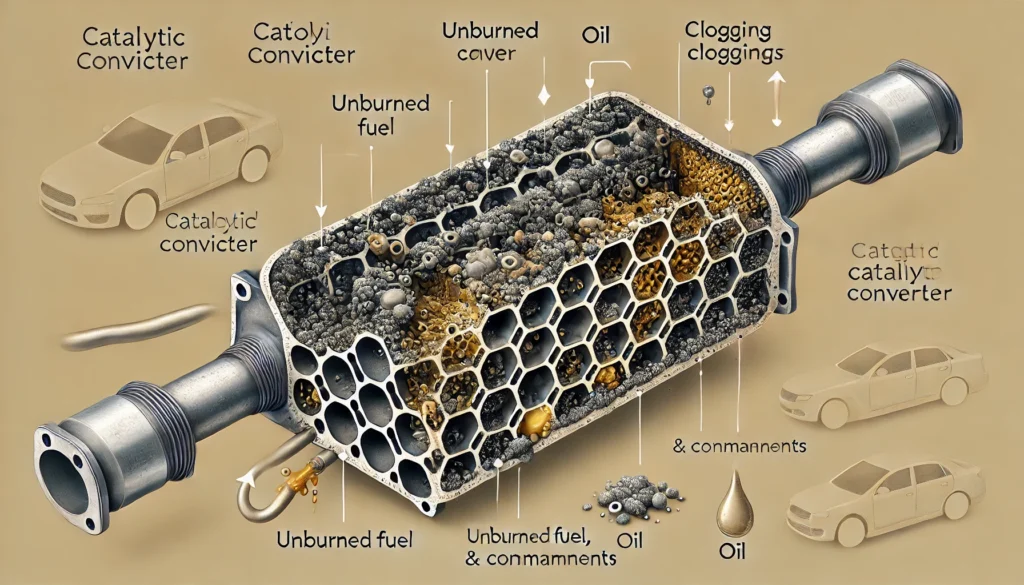Catalytic converters are vital for reducing vehicle emissions, but they can sometimes become clogged, leading to reduced performance and potential engine damage. Understanding what causes a catalytic converter to clog can help you prevent costly repairs and maintain your vehicle’s efficiency.

1. Unburned Fuel
One of the primary causes of a clogged catalytic converter is unburned fuel entering the exhaust system. This can happen when the engine runs too rich, meaning there is too much fuel and not enough air in the combustion process. The unburned fuel can accumulate in the catalytic converter, causing a buildup that eventually clogs it.
2. Engine Misfires
Engine misfires are another common cause of clogging. When the engine misfires, it allows unburned fuel to pass through the exhaust system and into the catalytic converter. This excess fuel can then cause a blockage as it builds up inside the converter.
3. Oil or Coolant Leaks
Leaks of oil or coolant into the exhaust system can also lead to a clogged catalytic converter. When these fluids enter the converter, they can coat the catalyst material, preventing it from properly converting harmful gases into less harmful emissions. Over time, this coating builds up, leading to a clog.
4. Contaminants in Fuel
Using low-quality or contaminated fuel can introduce impurities into the exhaust system, which can clog the catalytic converter. These impurities can include sulfur, lead, or other additives that don’t burn off completely during combustion. They accumulate in the converter, reducing its efficiency and leading to blockages.
5. Overheating
Overheating can cause the catalyst material inside the converter to break down and clog the system. This is often a result of engine problems such as running too rich, which increases the temperature in the exhaust system. The excessive heat can cause the substrate of the converter to melt or disintegrate, leading to a clog.
6. Short Trips
Frequent short trips where the engine doesn’t fully warm up can also contribute to a clogged catalytic converter. During short trips, the catalytic converter may not reach its optimal operating temperature, preventing it from effectively burning off deposits. Over time, this can lead to a buildup of unburned material inside the converter.
Conclusion
Regular vehicle maintenance, including ensuring your engine runs efficiently and using high-quality fuel, can help prevent a clogged catalytic converter. If you notice symptoms like reduced engine performance, poor fuel economy, or a check engine light, it might be time to have your catalytic converter checked by a professional.
